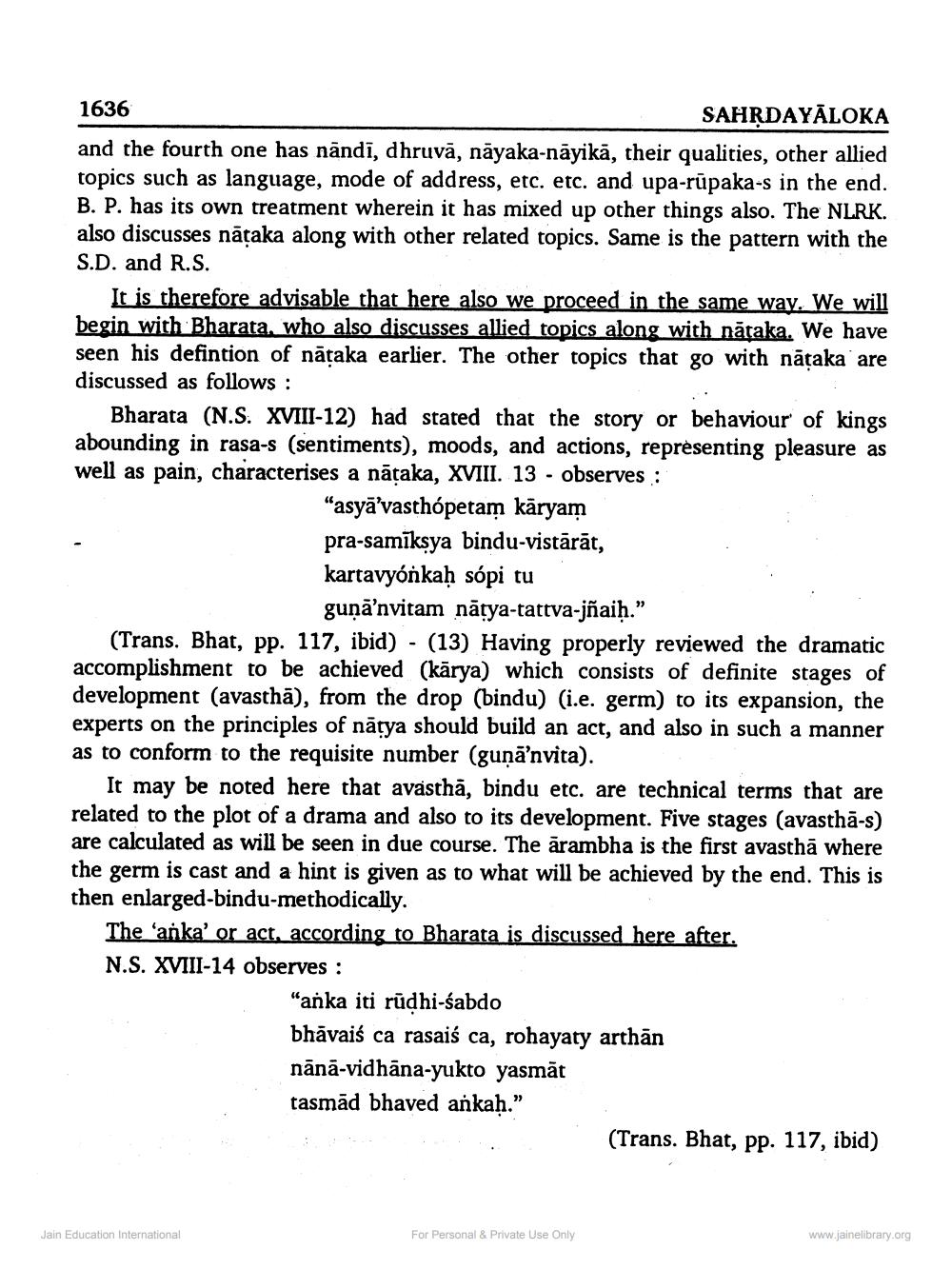________________
1636
SAHRDAYĀLOKA
and the fourth one has nāndī, dhruvā, nāyaka-nāyikā, their qualities, other allied topics such as language, mode of address, etc. etc. and upa-rupaka-s in the end. B. P. has its own treatment wherein it has mixed up other things also. The NLRK. also discusses nāțaka along with other related topics. Same is the pattern with the S.D. and R.S.
It is therefore advisable that here also we proceed in the same way. We will begin with Bharata, who also discusses allied topics along with nătaka. We have seen his defintion of nātaka earlier. The other topics that go with nataka are discussed as follows:
Bharata (N.S. XVIII-12) had stated that the story or behaviour of kings abounding in rasa-s (sentiments), moods, and actions, representing pleasure as well as pain, characterises a nātaka, XVIII. 13 - observes :
"asyā’vasthópetam kāryam pra-samīksya bindu-vistārāt, kartavyónkaḥ sópi tu
guņā’nvitam nātya-tattva-jñaiḥ.” (Trans. Bhat, pp. 117, ibid) - (13) Having properly reviewed the dramatic accomplishment to be achieved (kārya) which consists of definite stages of development (avasthā), from the drop (bindu) (i.e. germ) to its expansion, the experts on the principles of nātya should build an act, and also in such a manner as to conform to the requisite number (gunā'nvita).
It may be noted here that avasthā, bindu etc. are technical terms that are related to the plot of a drama and also to its development. Five stages (avasthā-s) are calculated as will be seen in due course. The arambha is the first avasthā where the germ is cast and a hint is given as to what will be achieved by the end. This is then enlarged-bindu-methodically.
The ‘anka' or act, according to Bharata is discussed here after. N.S. XVIII-14 observes :
"anka iti rūdhi-sabdo bhāvaiś ca rasaiś ca, rohayaty arthān nānā-vidhāna-yukto yasmāt tasmād bhaved ankah.”
(Trans. Bhat, pp. 117, ibid)
Jain Education International
For Personal & Private Use Only
www.jainelibrary.org




